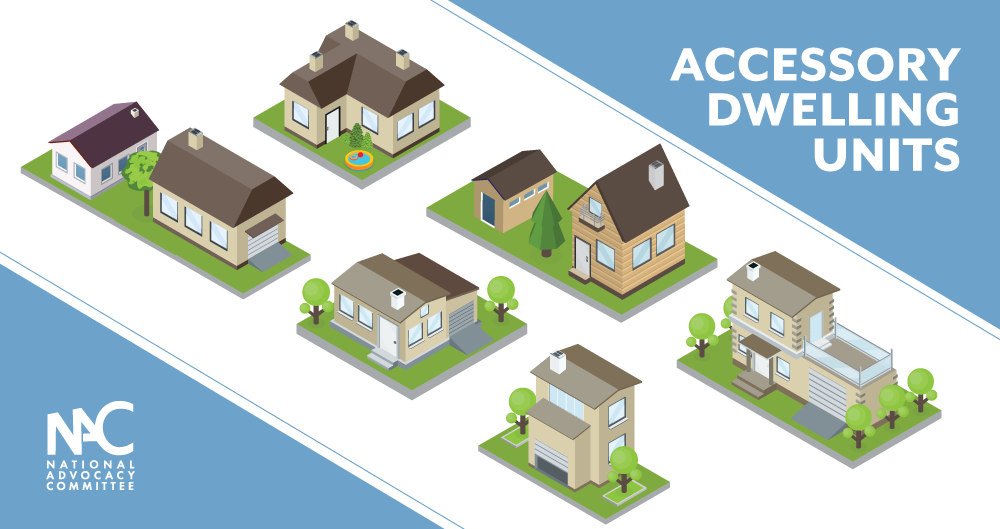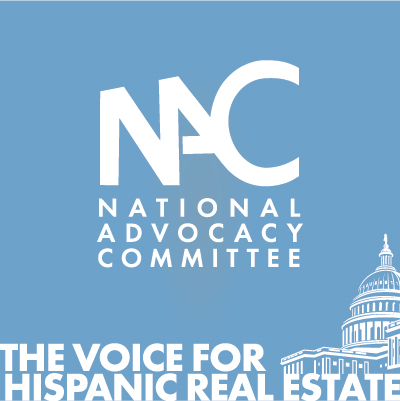Accessory Dwelling Units: Small but mighty force to address the housing shortage
Celebrating NAHREP familia, cultura, politics, and grassroots action
November, 2022

Accessory dwelling units, or ADUs, are a hot topic in the housing space. With the competitive housing market and rising interest rates, having an added source of income can be especially appealing to homeowners. For multigenerational households, ADUs provide additional space for older relatives or young adults in the family. Perhaps more importantly, ADUs can also offer additional housing supply in competitive markets. In 2023, NAHREP intends to execute a strategic plan to advocate for cities and states to not only allow but encourage the building of ADUs as a path to addressing the housing inventory crisis. Read on to learn more about what ADUs are, why they are important, and what we can do to ensure that more of these units are available in every market.
What are ADUs? Que son ADUs?
ADUs are additional residential units on a single-family property. ADUs are also called granny flats, in-law suites, efficiencies, accessory apartments, or backyard cottages, just to name a few.
All in all, these residential units can be built in different ways depending on the single-family home. There are three types of ADUs: attached, detached, and internal.
- Attached: An attached ADU is connected to the primary home with a separate entrance. Fun fact: Depending on which county the ADU is built in, it might even have its own address.
- Detached: A detached ADU shares the same property as a homeowner, but is built separately as its own unit.
- Internal: Internal ADUs are built inside the primary home.
Pero, why are ADUs important?
Encouraging ADU construction can help solve our housing inventory crisis by increasing housing supply. ADUs provide additional housing stock that, on a large scale, can lower housing prices and provide more affordable housing options for homeowners and renters. For example, first-time homebuyers with an ADU can use the additional source of income to help subsidize housing costs, and renters have more access to low-cost housing options in the community.
In a nutshell, ADUs:
- Create more affordable housing options for everyone. Building ADUs can increase our overall housing supply and, as a result, provide more affordable housing options. ADU construction naturally increases a neighborhood’s density and gives renters more opportunities to live in single-family neighborhoods.
- Provide additional financial support for homeowners. Properties with an ADU are priced 35% higher than ones without one. This is especially critical for first-time buyers who can use the additional revenue to pay for their mortgage or property taxes. Homeowners can also accrue additional wealth through supplemental incomes and higher property values.
- Offer an efficient, low-cost way to build housing. ADUs use fewer resources to build compared to completely new housing properties. For example, internal ADUs normally have lower operating and construction costs.
- Meet cultural needs. ADUs allow for multigenerational living, where parents, suegras, abuelitas, etc. can live in close proximity to their families and communities.
Research from U.C. Berkley Terner Center for Housing Innovation demonstrates the role ADU development plays in increasing housing stock. Since 2016, California has passed a series of laws that not only allow ADU production but removes barriers, such as impact fees and owner occupancy requirements. Between 2018 and 2019, the number of ADU permits increased by about 13,000 and the number of completed units grew by about 4,000 units that year. By 2021, the City of Los Angeles reported processing 20,000 units, making up nearly 40 percent of all housing building permits. Similarly, the City of San Jose reported that ADUs represented 38 percent of all housing building permits in 2021.
So, ADUs are important. Y ahora que? Now what?
Several states have permitted ADU construction, including Oregon, California, New Hampshire, and Minnesota, among others. However, some states still need to legalize ADU development and others need to actually encourage ADU construction. For example, homeowners in areas with legalized ADU development still face barriers to construction, including a cumbersome permit and building process, unclear regulations, and financial challenges.
To address these barriers to ADU development, NAHREP encourages lawmakers to institute policies that:
- Encourage ADU development in all cities and counties
- Provide additional financing opportunities for homeowners that wish to build an ADU
- Offer resources to explain the ADU process and make it easier for homeowners
In a separate analysis, the U.C. Berkley Terner Center surveyed homeowners throughout California to further identify barriers to ADU production. The report found that development costs deterred interested homeowners from building and mainstream financial products aren’t well-suited for ADU construction. Further, the process of permitting, designing, and/or building an ADU can be a frustrating process for homeowners. Additionally, the benefits of building ADUs are often concentrated in areas with greater access to resources, signifying a need for community awareness and targeted financial support in underserved communities.
ADU production is not the only solution to solving our housing crisis but it’s a step in the right direction. Next year, NAHREP will be focusing on a nationwide push for policies that support ADU production. We need to make sure our officials pass laws that not only allow but encourage the building of ADUs – caso cerrado!
Join the NAC Blog Mailing List
SubscribeAbout NAHREP’s National Advocacy Committee
The National Association of Hispanic Real Estate Professionals® (NAHREP®) advocates on behalf of its network of 50,000 real estate professionals and Hispanic homeowners nationwide. NAHREP focuses on national and state legislative issues that are critical to its mission: to advance sustainable Hispanic homeownership.
NAHREP firmly believes every individual who desires to become a homeowner and can sustain a mortgage should be granted access to a piece of the American Dream. To that end, we are focused on three main priorities: Housing Inventory, Access to Credit, and Immigration. Visit our website to read more about NAHREP’s policy priorities and to get involved.



